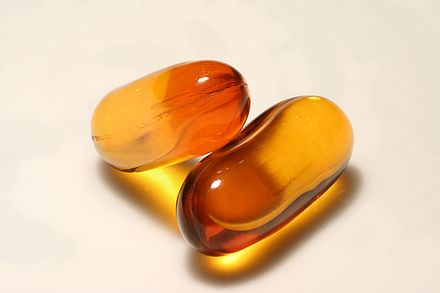
FISH CONSUMPTION, HEART DISEASE, AND STROKE
PART ONE: Nutristart Facebook Post from April (If you have already read this, skip to part two.)
A recent study (getting a lot of media attention) concluded that “supplementation with marine-derived omega-3 fatty acids for a mean of 4.4 years had no significant association with reductions in fatal or nonfatal coronary heart disease or any major vascular events.” Study
This is not the first such study to come to that conclusion, although other studies have found just the opposite. For example this one (also recent), concluded that “a higher Omega-3 Index was associated with reduced risk of both cardiovascular disease (39%) and all-cause mortality (34%).” Study
Nonetheless, my feeling has always been that taking fish oil capsules does not provide the same value as eating fish does. The idea that fish oil prevents heart disease originated with population studies, done on cultures that eat a lot of fish. But once science got hold of that idea, being reductionists, they tried to narrow down just what exactly in the fish was preventing heart disease. They concluded it was the omega 3 fatty acids that protected the heart; particularly the DHA and EPA (even though there are other omega 3 components as well).
A good example of this is demonstrated by looking at the fatty acid profile of unprocessed fish oil. Most fish oils are molecularly distilled in order to concentrate the omega 3’s, and to remove any toxins or impurities. But during this process many other fatty acids are also removed.
For example, unprocessed salmon oil (just pressed, and tested for contaminants) contains low amounts of DHA and EPA, but also contains other omega 3 fatty acids, as well as omega 5, 6, 7, 8, and 9. One obvious point is that we now know that omega 7 can work to clean the arteries, yet does not remain in processed omega 3 products.
Krill oil is another example of an unprocessed marine oil, one which is technically low in DHA/EPA, but which has a lot of clinical studies proving its effectiveness in supporting cardiovascular health. NutriKrill
Add to this the fact that people eating fish are not eating (for example) steak at that meal. Whereas, the Western consumer may have a poor quality (feedlot, industrial) animal protein at a meal, and pop a few fish oil caps, expecting that the outcome will be heart-protective.
All this just shows that you can’t substitute a pill or two for a dietary pattern, and expect the same results.
PART TWO: EATING FISH
When the Harvard Center for Risk Analysis reviewed the scientific literature to find out the relationship between fish consumption and stroke risk, they discovered that eating any fish at all lowered stroke risk by 12% compared to eating none. Furthermore, every additional serving of fish per week dropped the risk of stroke by another 2%. Study
Another Harvard study examined 12 years of data from over 40,000 men enrolled in The Health Professional Follow-up Study. This analysis revealed that men who ate fish 1 to 3 times monthly had a 43% lower risk of ischemic stroke than those men who ate fish less than once per month. (However eating fish daily did not reduce risk any more.) Study
The same is true for women. The Nurses’ Health Study followed 79,839 women for 14 years. It found that compared to women who ate fish less than once per month those who ate fish five times a week reduced their ischemic stroke risk by 52 percent. Eating fish two to four times per week reduced risk by 27 percent, and eating it once a week lowered risk by 22 percent. Study
But choose your fish wisely. Yet another Harvard study found that eating tuna or other broiled or baked fish one to four times per week reduced ischemic stroke risk by 27 percent compared to eating it once a month. But people who ate fried fish or fish sandwiches (i.e. fast-food fish burgers) more than once a week had a 44 percent higher ischemic stroke compared to those who only ate those types of fish less than once per month. Study
OTHER WAYS TO REDUCE STROKE RISK
- Take Magnesium: People with the highest magnesium intake had a 12% lower risk of ischemic stroke, and an 11% lower risk of total stroke compared to those with the lowest magnesium intake.
- Eat Fruits and Vegetables: In a Swedish study those eating the most fruits and vegetables had a 13% lower risk of total stroke compared to those eating the least.
- Take Lutein: High blood levels of lutein were linked to an 18% drop in stroke occurrence.
- Drink Tea: In a Chinese study those who drank tea frequently cut their stroke risk by 39% and people who had the tea habit for decades reduced their risk by 60%.
- Consume Olive Oil: A French study examining over 7,000 people ages 65 and older found that frequent olive oil consumption led to a 41% reduction in stroke risk, compared to those who consume no olive oil.
- Eat Soy Foods: Comparing the diets of 374 ischemic stroke patients with 464 controls, revealed that those eating the most soy foods reduced their risk of stroke by 77%, compared to those eating the least.
- Include Chocolate in Your Diet: In a study which examined the diets of 114,000 people researchers discovered that those participants who ate the most chocolate cut their stroke risk by 29%, compared to those who ate the least amount of chocolate. Chocolate needs to be dark for it to be beneficial to health.
- Drink Coffee: Korean researchers found that drinking four or more cups of coffee per day reduced total stroke risk by 17%, and ischemic stroke by 20%, compared to non-drinkers.
- Source